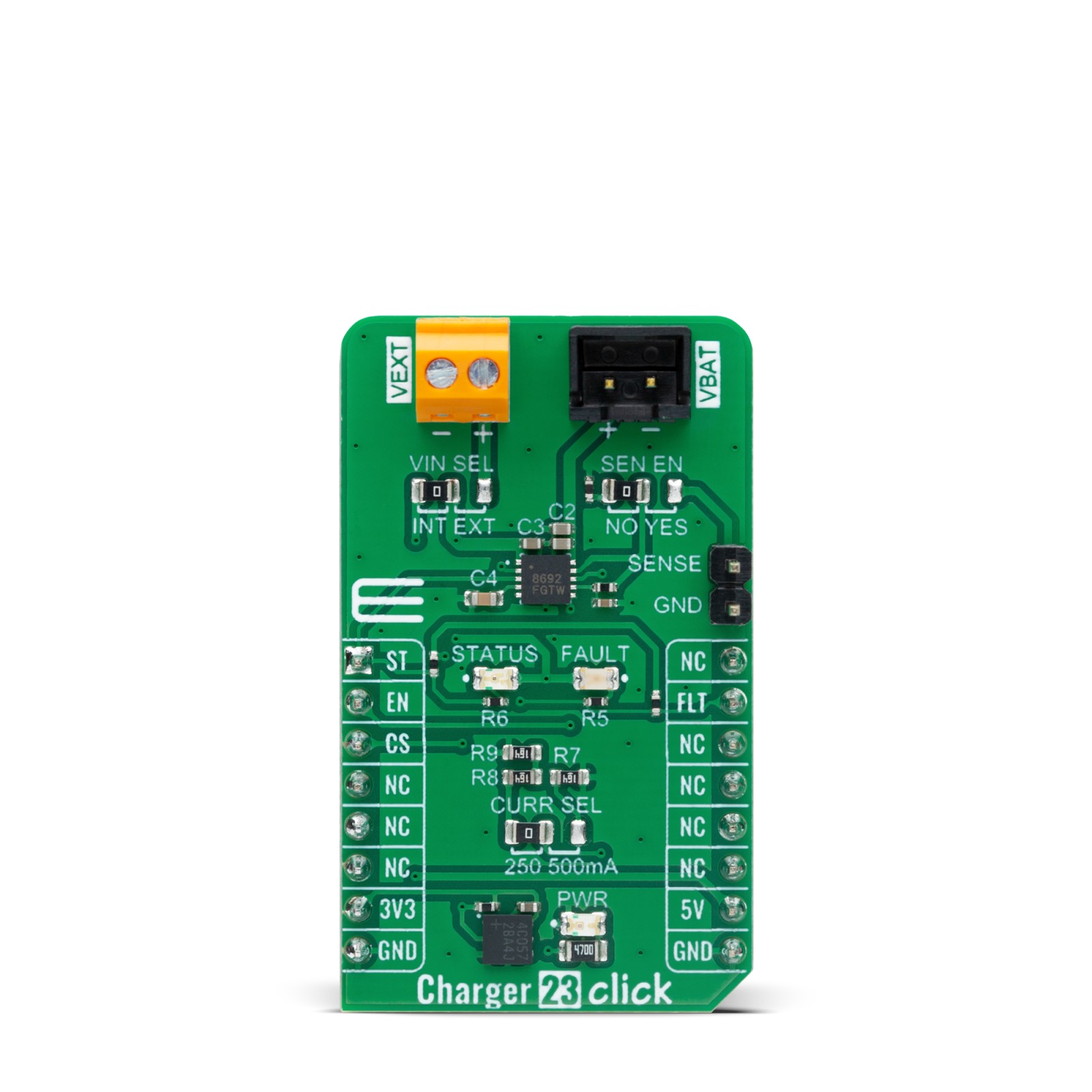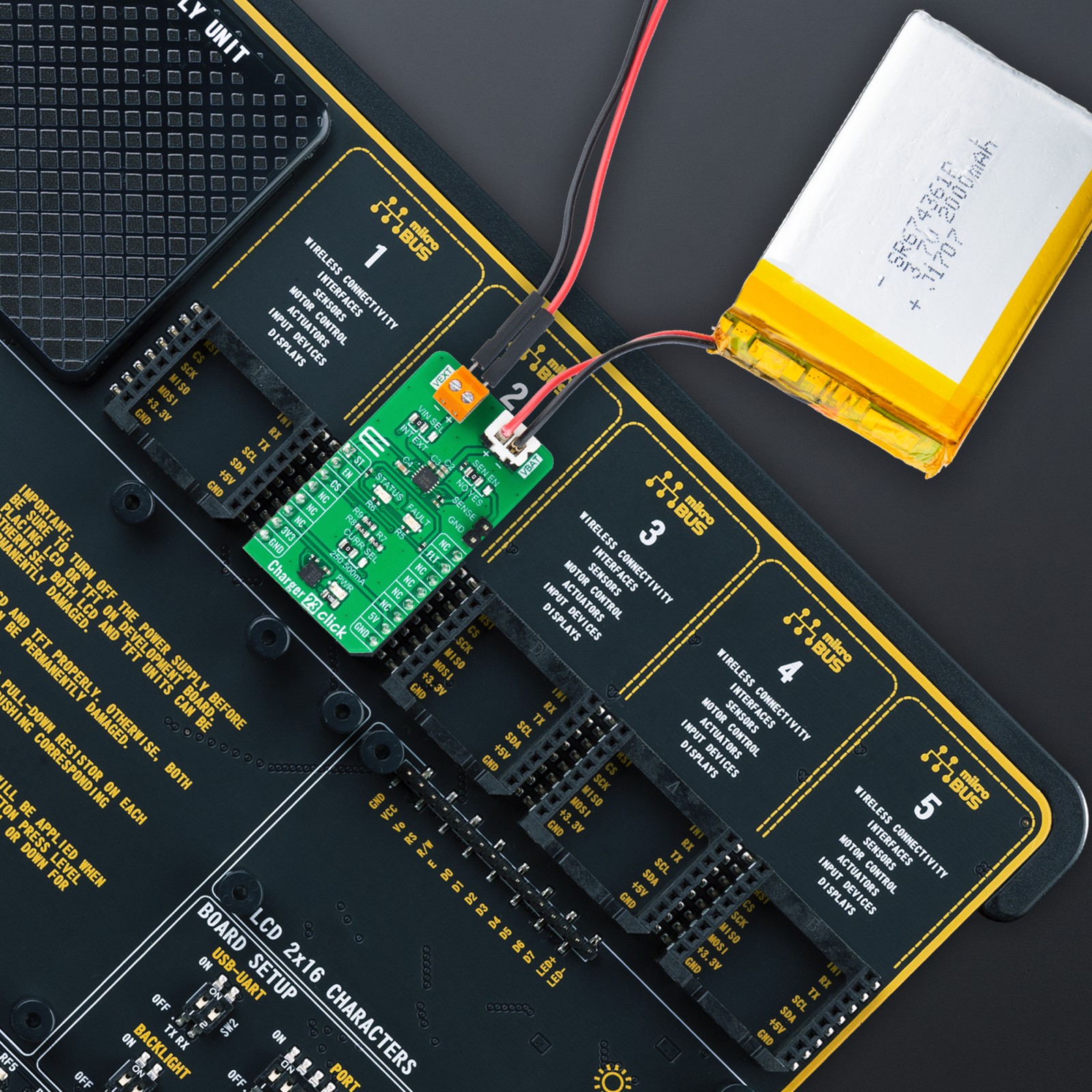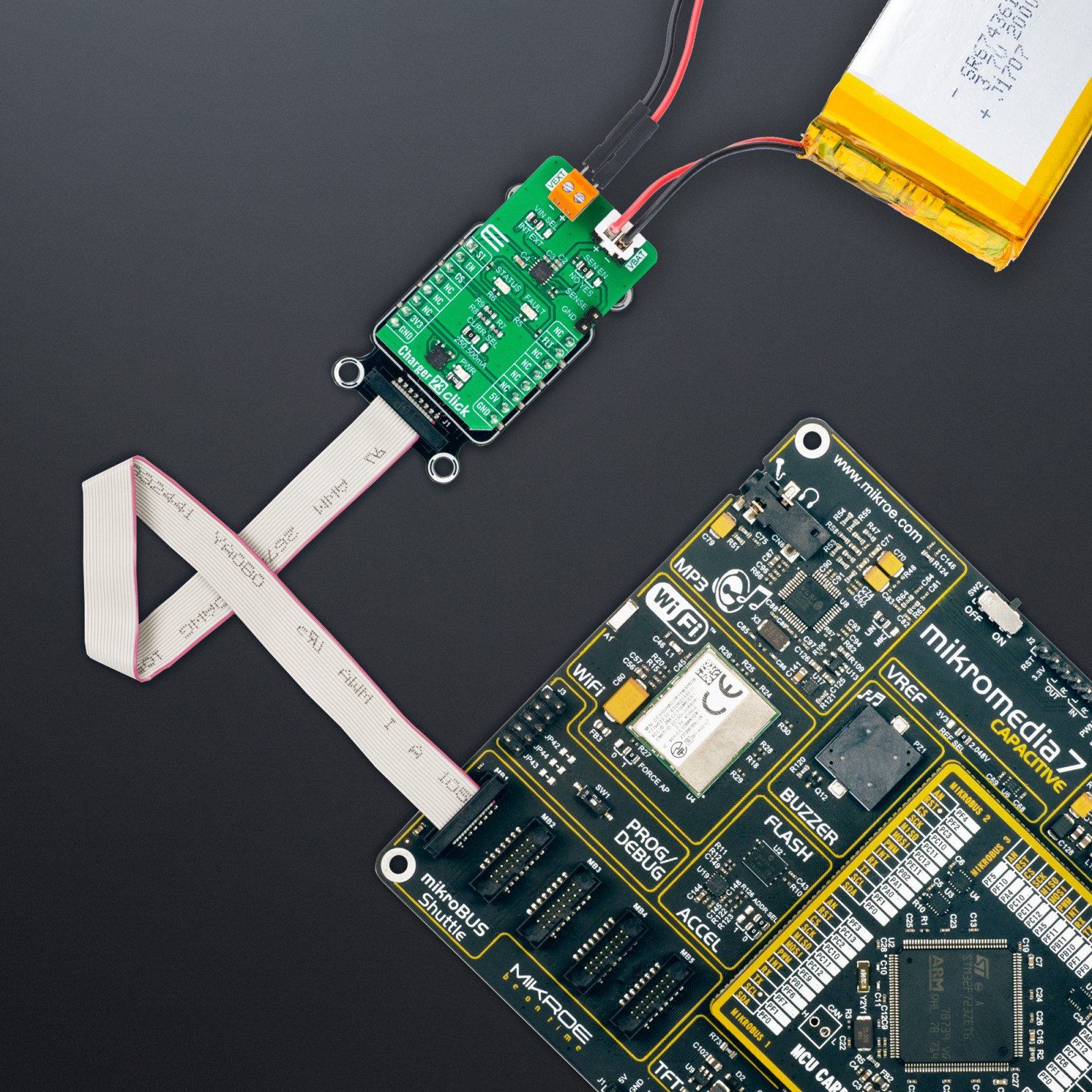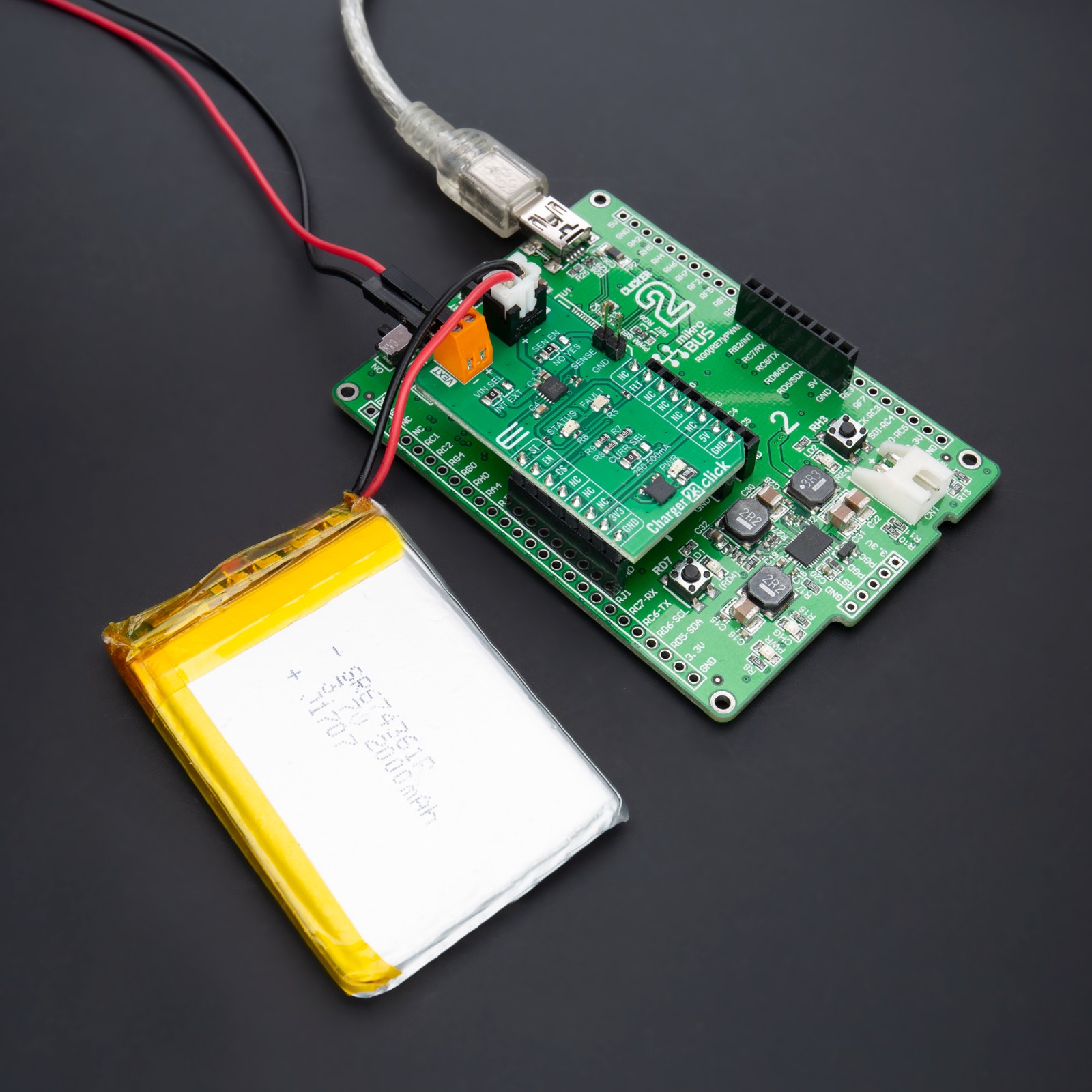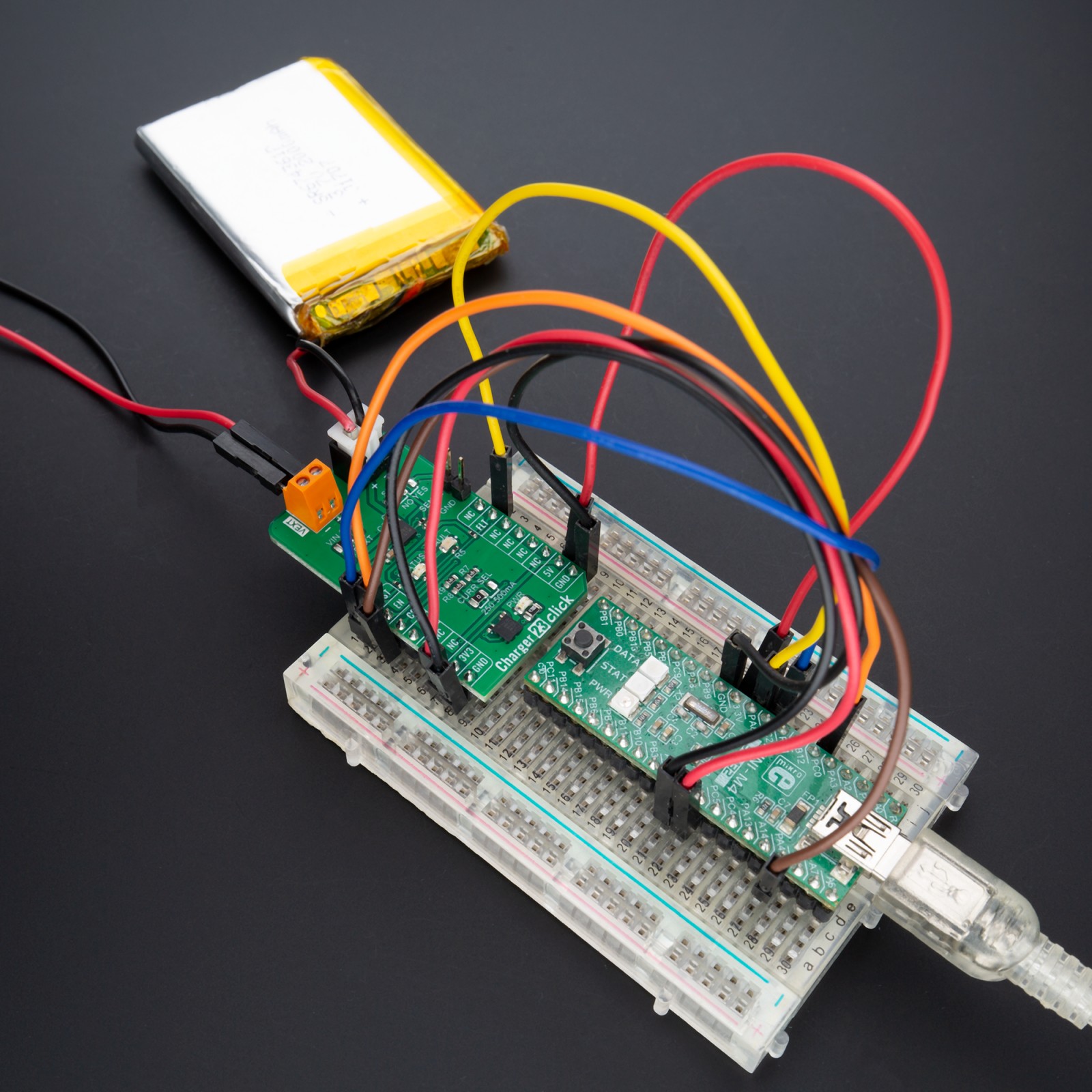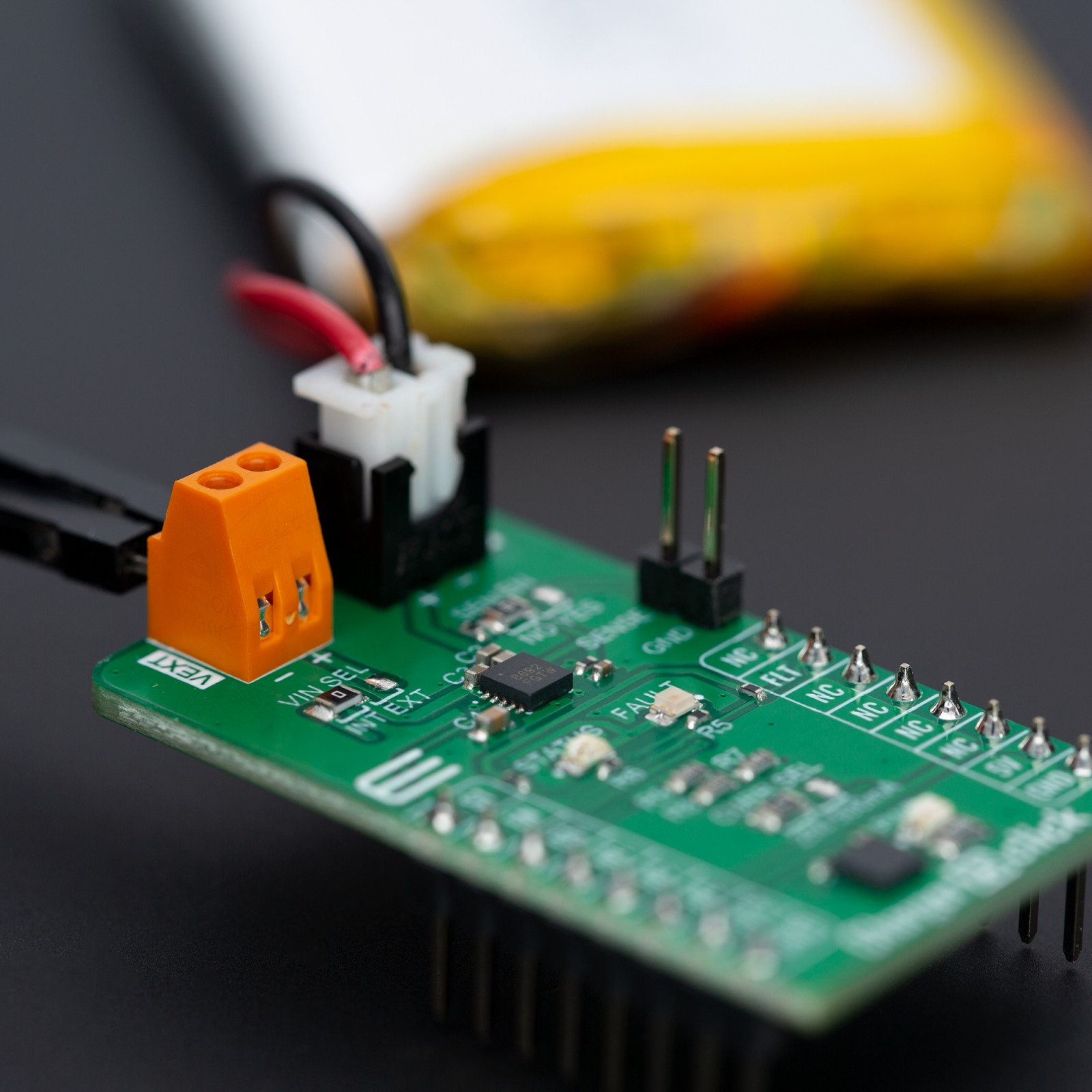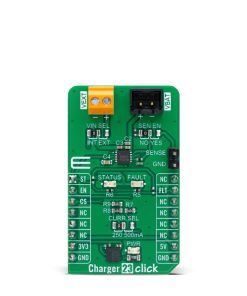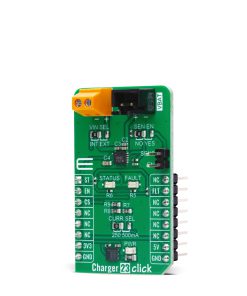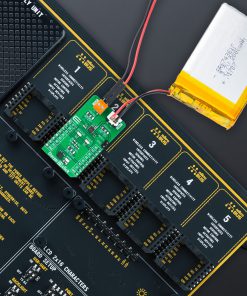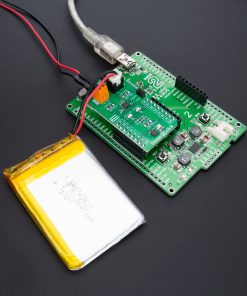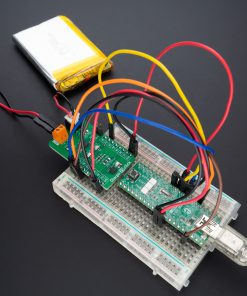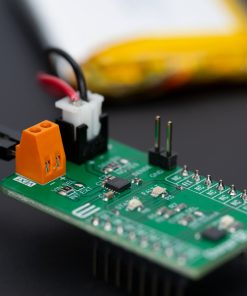Charger 23 Click
R415.00 ex. VAT
Charger 23 Click is a compact add-on board providing a single-cell battery charging solution. This board features the ISL78693, a single-cell Li-ion or Li-polymer battery charger from Renesas. The ISL78693 can operate with an input voltage as low as 2.6V and works as a linear charger with the battery charged in a Constant Current/Constant Voltage (CC/CV) profile. The charge current is selectable with an external resistor between 250 and 500mA. Additional features include the preconditioning of an over-discharged battery, an NTC thermistor interface for charging the battery in a safe temperature range, automatic recharge, and more. This Click board™ is suitable as a Li-Ion/Polymer battery charger for portable devices and accessories, power tools, and more.
Charger 23 Click is fully compatible with the mikroBUS™ socket and can be used on any host system supporting the mikroBUS™ standard. It comes with the mikroSDK open-source libraries, offering unparalleled flexibility for evaluation and customization. What sets this Click board™ apart is the groundbreaking ClickID feature, enabling your host system to seamlessly and automatically detect and identify this add-on board.
Stock: Lead-time applicable.
| 5+ | R394.25 |
| 10+ | R373.50 |
| 15+ | R352.75 |
| 20+ | R339.47 |

